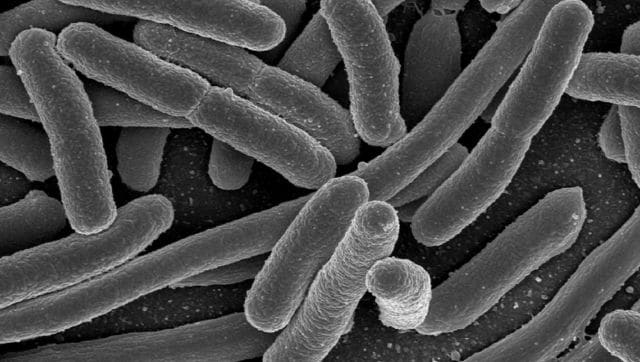The Ganga River in Uttar Pradesh’s Prayagraj, a lifeline of faith for millions, is grappling with severe contamination.
A recent report by a government agency has revealed alarmingly high levels of faecal coliform bacteria in the Ganga waters, raising concerns amid the ongoing Maha Kumbh Mela, where over 50 crore devotees have already taken a dip and many more are expected.
However, UP Chief Minister Yogi Adityanath has refuted the report, saying the water is fit for drinking.
So, what did the report say? How safe is the holy bath at Sangam? Here’s everything you need to know.
Faecal coliform is a bacteria that is naturally present in the intestines of humans and warm-blooded animals.Their presence in water is often a warning sign of possible contamination.
These bacteria indicate that water may contain harmful pathogens like viruses, parasites, and other disease-causing bacteria, which originate from human or animal waste.
Water quality assessments frequently test for faecal coliform bacteria to determine whether it is safe for drinking, swimming, bathing, or any other recreational use.
The Central Pollution Control Board (CPCB) report which analysed Ganga water said, “The river water quality was not conforming to the primary water quality for bathing with respect to faecal coliform (FC) at all the monitored locations on various occasions. A large number of people bathe in the river at Prayagraj during the Mahakumbh Mela, including on auspicious bathing days, which eventually leads to an increase in faecal concentration.”
According to KnowYourH2O, a US-based water research programme, untreated faecal matter in the water leads to excess organic material, which then decays and depletes oxygen levels. This not only poses a risk to human health but also threatens the aquatic ecosystem, the organisation told India Today.
Also read:
River Ganga and its boats have become far too noisy for the river dolphins to communicate
A committee formed by the Ministry of Urban Development in 2004 recommended that faecal coliform levels in river water should ideally be limited to 500 MPN/100ml, with a maximum permissible limit of 2,500 MPN/100ml for discharge into the river.
MPN/100ml refers to the “Most Probable Number” of bacteria present in 100 millilitres of a water sample.
The CPCB has also set the safe limit for faecal coliform in bathing water at 2,500 MPN/100ml. However, the latest recorded data on February 4, which was a day after Basant Panchami Shahi Snan at the Maha Kumbh Mela, paints a worrying picture.
The government agency reported faecal coliform levels in the Ganga at 11,000 MPN/100ml near Shastri Bridge and 7,900 MPN/100ml at Sangam—both far exceeding the safe limit.
In the Yamuna, just before its confluence with the Ganga at Sangam, the bacterial count stood at 4,900 MPN/100ml.
According to a report by the Centre for Science and Environment (CSE), coliform bacteria itself does not directly cause illness but serves as a strong indicator of the presence of harmful pathogens in water.
Dr Atul Kakar, Senior Consultant in the Department of Internal Medicine at New Delhi’s Sir Ganga Ram Hospital, told PTI that “the level of sanitisation and preparedness required is not up to the mark, and the bacteria from our stool are entering the water.”
“Therefore, it is not safe for consumption or even for bathing. This is what the report has indicated,” Dr Kakar added.
Contaminated water can lead to various health issues, he warned. “Whenever there is infected water, it can lead to various waterborne diseases, including skin diseases, and ailments like loose motions, diarrhoea, vomiting, typhoid, and cholera,” he said.
Beyond the immediate health risks to pilgrims, the contamination of the Ganga also endangers local communities that depend on it for drinking, cooking, and daily activities. Continuous exposure to faecal bacteria can lead to infections affecting the skin, digestive system, and even respiratory health, making it a serious health concern.
The Central Pollution Control Board (CPCB) on Monday informed the National Green Tribunal (NGT) about its findings on faecal contamination in the Ganga. Reviewing the report, the tribunal took note of multiple violations and flagged non-compliance by the Uttar Pradesh Pollution Control Board (UPPCB).
The NGT observed that the UPPCB had failed to submit a comprehensive action taken report as previously directed. Instead, it had only provided a cover letter along with some water test reports, rather than a full compliance document.
In response, the tribunal has given the counsel representing Uttar Pradesh one day to review the CPCB’s findings and file a response. Additionally, it directed that the Member Secretary, UPPCB, and the concerned state authority responsible for maintaining water quality in the Ganga at Prayagraj appear virtually at the next hearing, scheduled for February 19.
However, Uttar Pradesh Chief Minister Yogi Adityanath has said that the water at the Sangam site is fit for both bathing and ritual drinking, dismissing the report. Speaking in the Legislative Assembly, Adityanath said reports of severe contamination of Maha Kumbh water were misleading.
“The UP and CPCB are continuously monitoring water quality, and recent reports confirm that the water at the Sangam is now fit for both bathing and ritual drinking (aachman),” he said.
“This means that the false campaign was done only to defame the Maha Kumbh,” he added.
The UP CM further stated, “The reasons for increased faecal coliform can be several, such as sewage leakage and animal waste, but the amount of faecal coliform in Prayagraj is, as per the standards, less than 2,500 MPN per 100 ml.”
The CM said CPCB also confirmed that the water met cleanliness standards.
“In January and February, faecal coliform levels at the Sangam nose were found to be within the acceptable range, below 2,500 MPN per 100ml, according to the UP pollution board,” he said.
With input from agencies
Link to article –
High levels of faecal bacteria in Maha Kumbh’s Sangam waters: Is it safe to take a dip?
